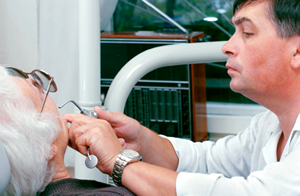South Ogden
Basic Rundown of a Gum Graft Surgery

A large percentage of the American population suffers from periodontal disease, according to some studies. This puts most people at risk of tooth loss. However, there are options we can discuss with you if you have receding gums.
Here’s the basic rundown of a gum graft surgery and what you can expect. It sounds worse than it is.
The Gum Graft Surgery Procedure
Depending on your individual case, you have several options for your gum graft surgery. You will be put under with a sedative or general anesthesia. If the latter, you will need someone to drive you home.
- Connective-Tissue Grafts – this is the most common surgery and consists of cutting a flap of skin on the roof of your mouth or palate and taking tissue from under the flap – connective tissue. This tissue is stitched to the area where the receding gums are located, and the flap is stitched up.
- Free gingival grafts – a small amount of tissue is removed directly from the roof of the mouth (not from under it) and then it’s attached to the gum being treated.
- Pedicle Grafts – in this procedure, instead of using tissue from the palate, it is taken from the surrounding area to repair the tooth that needs repairing. The gum is pulled over the affected area and sewn into place.
Recovery From Gum Graft Surgery
You will be able to go home after the procedure with specific instructions on how to care for your mouth and medications for pain control. You will also be instructed not to brush or floss the area that was repaired until it’s healed, and a special mouth rinse will be recommended to help with plaque control. You may also be prescribed antibiotics to prevent infection.
It is very important to follow all the instructions precisely, so your mouth can heal quickly. It is recommended that you eat a soft diet for a week or two, so stock up on eggs, pasta, yogurt, cooked vegetables and healthy drinks.

